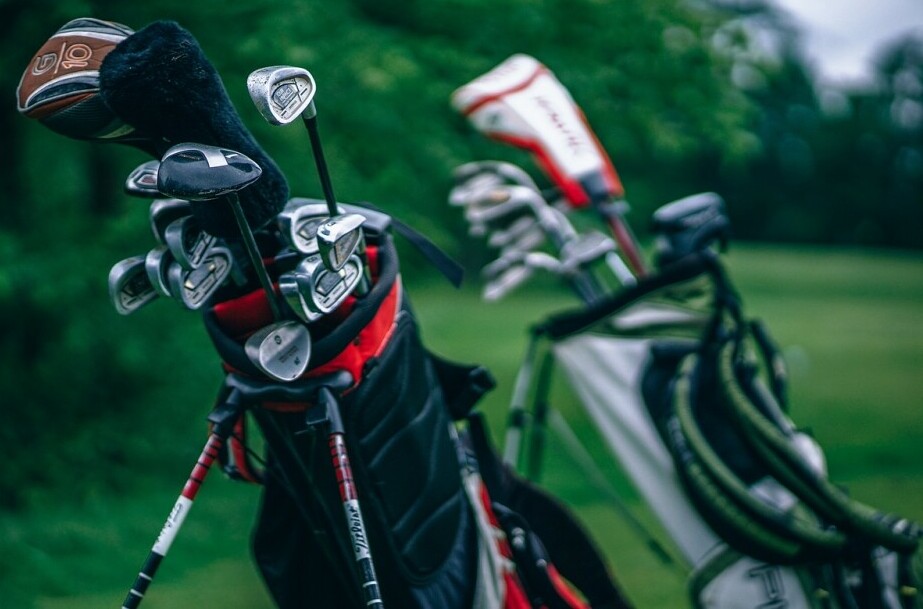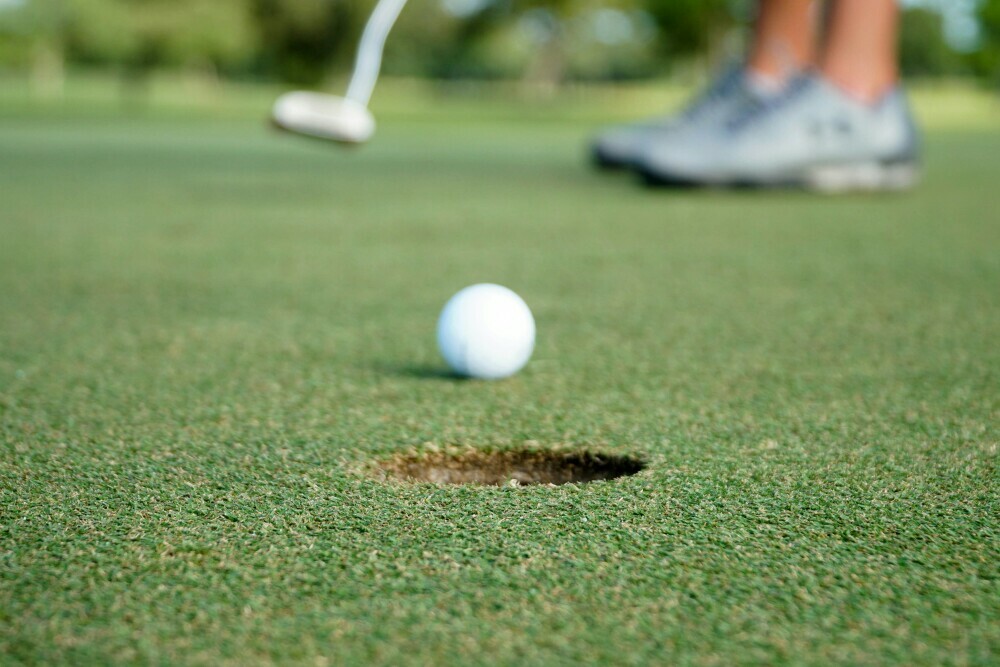I’m going to kick things off by easing you into the world of golf, a sport loved by many for its blend of skill, strategy, and the sheer joys of being outdoors. Golf is more than just smacking a ball into a series of holes; it’s about precision, patience, and persistence. You’re going to find out about the rudiments of golf, giving you a solid footing as you start your journey.
First up, in golf, the main aim is simple: get the ball from the tee into the hole on the green in as few strokes as possible. But, this isn’t just about whacking the ball and hoping for the best; every stroke counts, and strategy plays a massive role in your game.
A standard golf course is made up of 18 holes, each with its unique challenges. You’ll come across a variety of terrains, from the flat, even fairways to the unforgiving roughs and sand traps awaiting to test your resolve. Understanding course layout and the basic terms, like ‘birdie’, ‘bogey’, or ‘eagle’, is crucial. These terms describe the number of strokes under or over par you’ve completed a hole in, and ‘par’ itself indicates the expected number of strokes it should take an expert player to complete a hole.

Your on-course conduct is also vital. Golf prides itself on etiquette and sportsmanship. That means maintaining a steady pace of play, being considerate of other players, and respecting the course. For an in-depth look at golf rules and etiquette, I suggest checking the official rulebook from The R&A (https://www.randa.org/). It’s a fascinating read that offers more insights than you might expect.
Now what? After getting a good grasp on the basics, you might wonder what exactly you need to get started. Well, there’s no need to worry, as I’m here to help you with the next logical step: gearing up. It’s crucial to have the right equipment on hand before you tee off for the first time.
Gearing Up: Essential Equipment for Novice Golfers
I’m going to walk you through what you need to have in your golf bag before you hit the course. It’s not just about having the shiniest clubs; it’s selecting the right set that matches your beginner’s skill level and physical attributes. Lightweight clubs with large clubheads can make all the difference when you’re starting out.

You’re going to find out about the importance of wearing the right outfit. I’m talking about clothes that aren’t just meant to follow the dress code but also provide comfort and flexibility for those swings.
Golf isn’t just about getting the ball into the hole; it’s the little things that add to the experience. That’s why accessories like gloves for a better grip, ball markers, and divot repair tools are essential add-ons.
Lastly, I’ll touch on the art of managing your golf bag. Knowing how to organize your clubs and accessories efficiently can save you time and hassle during your game, allowing you to focus more on your swing and less on searching for your putter. Legally, you are allowed 14 clubs in your golf bag, but as you are starting out, it’s very common and more advisable to begin with a half set of clubs. Then, when your game improves, you can move to a full set of clubs.
Mastering the Swing: Techniques and Tips
Now, I’m going to walk through the steps you need to nail the perfect golf swing, because getting this right can transform your play. And guess what? Just like with everything else, with practice, it gets easier.
Let’s start with the grip. Your grip is your only connection to the club, so it needs to be solid. The most popular is the interlocking and overlapping grips, which are popular among pros and amateurs alike. Choose the right grip that feels comfortable and gives you control.
Next, take a look at your stance. Your feet should be shoulder-width apart, offering balance and a solid foundation. The importance of posture can’t be understated, either. Keep your back straight, bend at the hips, and let those arms hang naturally.
The swing itself begins with a smooth backswing, transitions to a poised top position, then accelerates through the downswing and follows through. I’m going to break down each of these components and what you should focus on.

Key drills come in handy here. For instance, the half-swing drill can help you get a feel for the motion without getting overwhelmed. And remember, consistency is more important than strength, especially when you’re starting out.
The Short Game: Perfecting Your Putting and Chipping
So you’ve got the hang of your golf swing, but the game doesn’t stop once you’re nearing the green; that’s where the short game comes into play. The difference between a good round and a great round often lies in those final few feet. Let’s get into how to sharpen your skills when the hole is in sight.
First off, let’s talk putting. The putter is your precision tool, and putting is all about accuracy and control. Focus on developing a consistent putting stroke. Align your eyes directly over the ball, keep your arms and wrists firm, and use your shoulders to drive the movement. Practice with different distances to get a feel for the power needed in various scenarios.

Chipping is another critical component of the short game. When the ball is just off the green—too far to putt but too close for a full swing—chipping is your best friend. It’s vital to choose the right club, usually a wedge, and to use a stroke similar to your putting motion, but with a slight hinge in the wrist to lift the ball into the air. With chipping, it’s all about landing spot selection and understanding how the ball will behave once it hits the ground.
Improvement comes with practice, so set aside time to work on your putting and chilling. Use drills such as ‘around the world,’ where you putt from various points around a hole, or practice chipping from different lies to mimic real course conditions.

As you refine your techniques with putter and wedge in hand, you’re setting the stage for an even greater challenge: conquering the mental game. Developing mental resilience can turn those near misses into successful putts and chips. In the next section, you’re going to find out about nurturing the mental toughness that’ll complement the physical skills you’ve been honing. After all, a strong mental game is the secret ingredient to not just playing golf, but excelling at it.
Beyond the Basics: Improving Your Mental Game
I’m going to let you in on a little secret about golf: it’s as much a mental game as it is a physical one. You can have the best swing in the world, but if your head isn’t in the right place, you’re going to struggle. That’s why you’re going to find out about the importance of mental toughness and focus.
In my opinion, the key to a strong mental game starts with preparation. Before you even step onto the course, you’ve got to envision your success and establish a game plan. This isn’t just about imagining the ball going into the hole; it’s also about setting realistic goals for your skill level.
Don’t worry too much about hitting a bad shot. Everyone does it, even the professionals. The trick is learning how to shake it off and stay positive. You can always adjust your approach down the road, but in the moment, it’s all about the next shot.
Choose something that resonates with you when it comes to coping strategies – maybe it’s a mantra, a breathing technique, or a pre-shot routine. Whatever it is, make it a consistent part of your game. Consistency builds confidence, and confidence is key in golf.
There’s a lot of opportunity in becoming a savvy golfer. It’s not just about physical abilities; it’s honing the skill to stay calm under pressure and to think strategically. Continuous learning and self-evaluation are your best allies here. Whenever you play, take a moment to reflect on both the good and the not-so-good shots.
I really hope that you use the knowledge from this guide as a stepping stone to becoming a more skilled, confident, and mentally tough golfer. Remember, practice isn’t just about hitting balls – it’s about nurturing the mental resilience you’ll need for every shot, every game, and every challenge on and off the course.


Hello. I think that technique is everything in golf. It has very little to do with the clubs especially as a beginner it’s all about technique. If you have the right technique you can use the worst golf clubs in the world and still do very well. So following techniques is what it’s all about and you provided some good ones here.